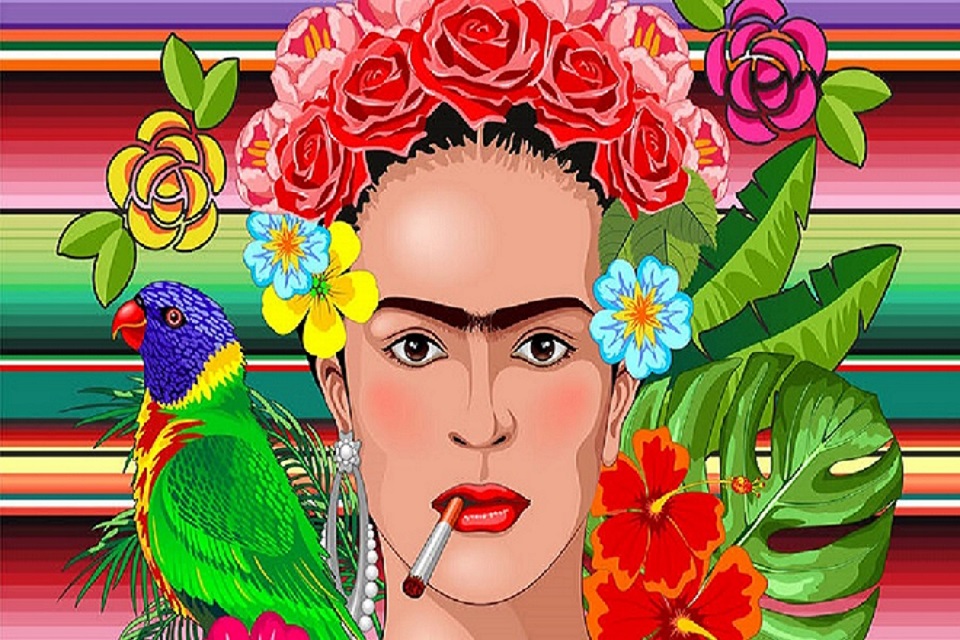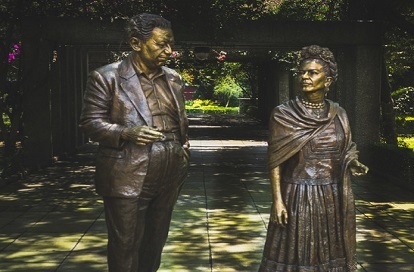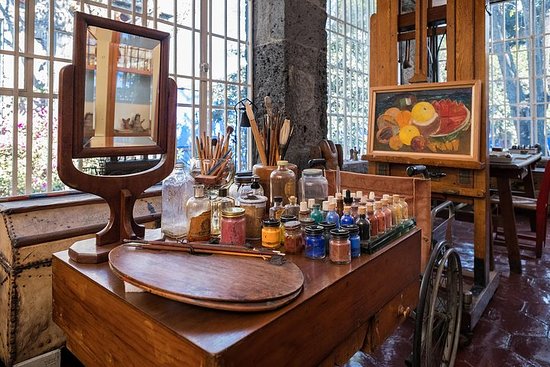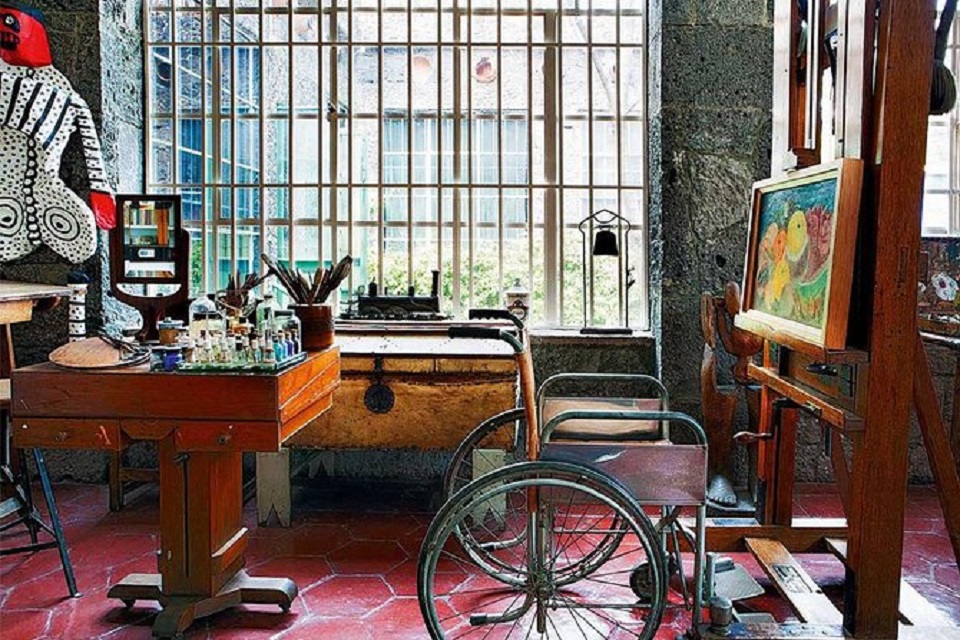30 indigenous peoples and groups of
Mexico with the largest population
Get to know indigenous cultures, a breathtaking holiday, which is put together only according to your wishes.Mexico is one of the most ethnically diverse countries in the world, human conglomerates with linguistic, spiritual, cultural, gastronomic and other heritages that enrich the Mexican nation.
We invite you to discover the peculiarities of the most important indigenous groups and peoples of Mexico on an interesting journey through their habitats, customs, traditions and legends.
You decide what you want to know, tell us your wishes, we will make you one of the best offers as you are used to from Habibi World Travel & Tour
Characteristics of the indigenous peoples of Mexico There are 56 ethnic groups in Mexico, making up a population of approximately 15 million indigenous people.
Linguistic diversification is one of the most notorious characteristics of Mexican Indians, distinguishing more than 100 languages, although this number varies with the classification criteria used. An important part of this population are the indigenous peoples of the Maya, heirs to one of the most fascinating Native American civilizations.
Mexican indigenous people Definition of Indigenous Peoples: They are those who present an ethnic identity based on their origins, history, language, culture, institutions and traditions. They can be defined as indigenous peoples descended from the original societies of a country or territory.
Supporting Indigenous Peoples of Mexico Habibi World Travel & Tour : We provide our tourists with the following information about indigenous peoples, valuable information about the history and current situation of the Mexican indigenous peoples. This gives the indigenous peoples of Mexico the opportunity to actively work with Las Almas Tour & Travel.
We hope you enjoy our travel offers to the indigenous peoples of Mexico. We invite you to share it with your friends on social networks.
1. Nahuas
Die Gruppe der Nahua-Völker führt die mexikanischen indigenen Volksgruppen mit 2,45 Millionen Einwohnern an.

They were called Aztecs by the Spanish and share the Nahuatl language. Anthropologists point out that they formed 7 peoples of the same nation: Aztecs (Mexica), Xochimilcas, Tepanecas, Chalcas, Tlahuicas, Acolhuas and Tlaxcaltecas.
Before the arrival of the Spaniards, they formed a powerful conglomerate throughout the Valley of Mexico with impressive martial, social, and economic clout.
Their current communities reside in the south of the DF, specifically in the Milpa Alta delegation and in enclaves in the states of Mexico, Puebla, Morelos, Tlaxcala, Hidalgo, Veracruz, Oaxaca, and Guerrero.
Nahuatl is the indigenous language with the greatest influence on Mexican Spanish. The nouns tomato, comal, avocado, guacamole, chocolate, atole, esquite, mezcal, and jícara are of Nahua origin. The words achichincle, tianguis, cuate, straw, kite, corn, and pamper are also from Nahua.
In 2014 the work Xochicuicatl cuecuechtli, the first opera composed in Nahuatl, was premiered in Mexico City. It is based on the sung poem of the same name compiled by Bernardino de Sahagún in his collection of Mexican songs.
Traditions and Customs of the Nahuas
Its main ceremonies are celebrated at the winter solstice, during carnival, on the Day of the Dead, and on the occasion of planting and harvesting.
Their fundamental space for economic exchange and social interaction was the tianguis, the street market they set up in Mexican cities and towns.
His painting on amat paper, wood and ceramics is one of the most famous in Mexico.
The Nahua family concept extends well beyond the family core, and singleness and widowhood are not widespread.
2. Mayas
Any chronicle or monograph of the indigenous peoples of Mexico gives the Mayans a special place in the wonderful culture they created in Mesoamerica.
This civilization developed 4 millennia ago in Guatemala, in what is now the Mexican states of Yucatán, Campeche Quintana Roo, Tabasco, and Chiapas, as well as in the territories of Belize, Honduras, and El Salvador.
They have one main language and a large number of variants, the most important of which are the Yucatec Maya or Peninsular Maya.
Their direct descendants group in Mexico a current population of 1.48 million indigenous people living in the states of the Yucatan Peninsula.
The first Mayas came to Mexico from El Petén (Guatemala) and settled in Bacalar (Quintana Roo). Some of the words the Maya gave to the Spanish are cocoa, cenote, chamaco, cachito and patatús.
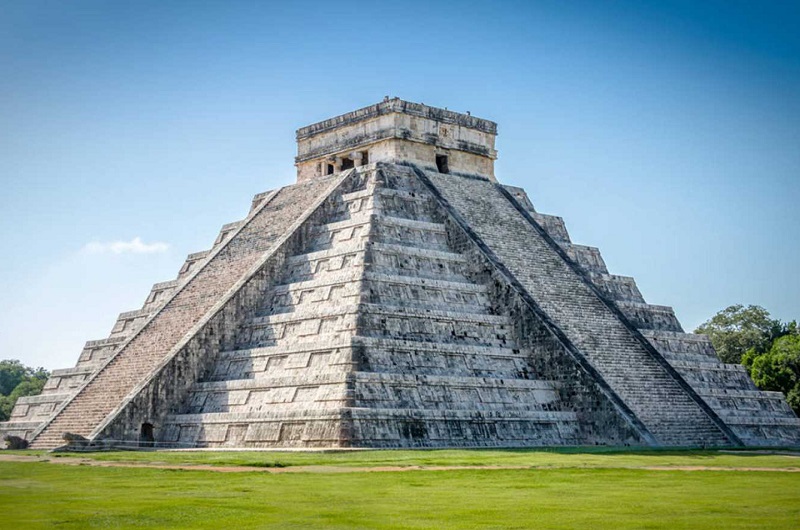
Among the names of the world's indigenous peoples, that of the Mayans is pronounced with admiration for their advanced culture in architecture, art, mathematics and astronomy.
The Maya were probably the first human beings to understand the concept of zero in mathematics.
Mayan traditions and customs
Its remarkable architecture and art was reflected in pyramids, temples and stelae with clear messages and allegories at sites such as Chichen Itzá, Palenque, Uxmal, Tulum and Cobá.
The sophistication of his calendar and his precise astronomical records are amazing.
Among its traditions stand out Mayan ball games and the worship of cenotes as divine bodies of water. They practiced human sacrifice because they believed it to please and nourish the gods.
One of the most important Mayan ceremonies is the Xukulen, dedicated to Ajaw, the creator god of the universe.
3. Zapoteken
They form the third Mexican indigenous city of 778,000 people concentrated in the state of Oaxaca, with also smaller communities in neighboring states.
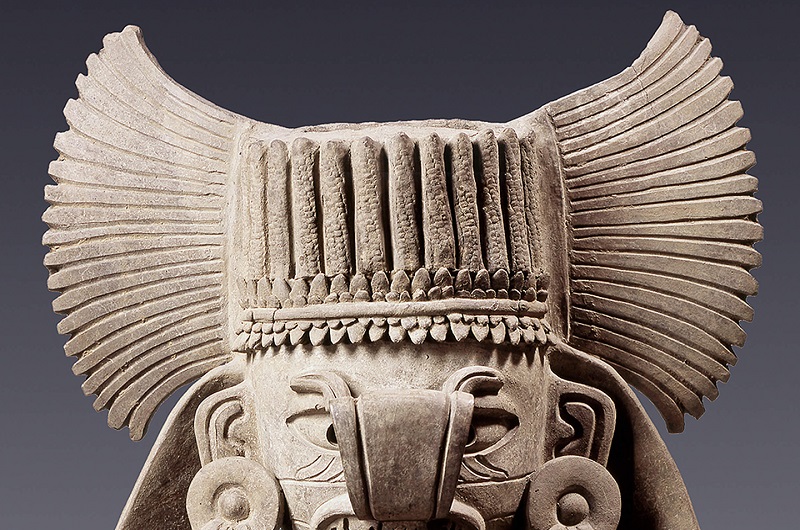
The main Zapotec enclaves are in the Oaxaca Valley, the Zapotec Sierra, and the Tehuantepec Isthmus.
The name "Zapotec" comes from the Nahuatl word "tzapotēcatl", which the Mexicans used to define them as "dwellers of the place of the sapote".
The Zapotec language has many varieties and belongs to the Otomanguic family of languages.
The most famous Zapotek is the "meritorious of America", Benito Juárez.
The original Zapotecs practiced polytheism and the main members of their Olympus were Coquihani, god of the sun and sky, and Cocijo, god of rain. They also worshiped an anonymous figure in the form of a jaguar bat, believed to be the deity of life and death, in the style of the bat god Camazotz in Mayan religion.
The Zapotec developed around 400 BC. an epigraphic writing system related primarily to state power. The most important political center of the Zapotec was Monte Albán.
Traditions and customs of the Zapotec
The Zapotec culture gave the Day of the Dead its mystical connotation of the meeting of two worlds that Mexico currently has.
The Guelaguetza is its most important festival and one of the most colorful in Mexico in terms of dance and music.
The central festival of the Guelaguetza takes place on Fortín Hill in the city of Oaxaca, attended by delegations from all regions of the state.
Another Zapotec tradition is the Night of the Candles to venerate the patron saints of cities, towns and neighborhoods.
4. Mixteken
The Mixtecs represent the fourth indigenous Mexican group with 727,000 indigenous people. Its historical geographic area was the Mixteca, an area in southern Mexico shared by the states of Puebla, Guerrero and Oaxaca.
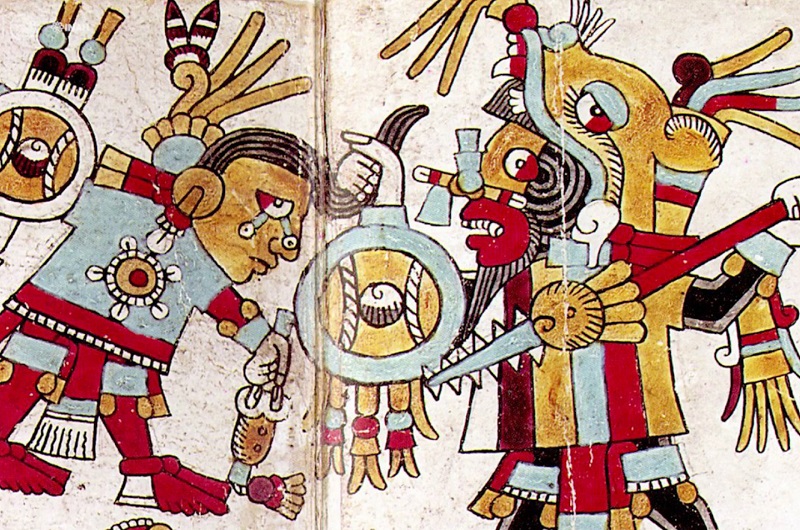
It is one of the Mexican Indian cities with the oldest traces, so much so that they predate the beginning of the cultivation of corn.
The Spanish conquest of the Mixteca was relatively easy due to the rulers' cooperation in exchange for maintaining privileges.
This region enjoyed relative prosperity during the viceroyalty due to the high value of cochineal used as a dye.
The westernization or Hispanization of the Mixtec, combined with the atomization of their territory, meant that this people retained a communal rather than ethnic identity.
The so-called Mixtec languages are language variants of Otomanguic origin. The historical processes and the strong migration trend of the Mixtec brought their languages to almost every Mexican state.
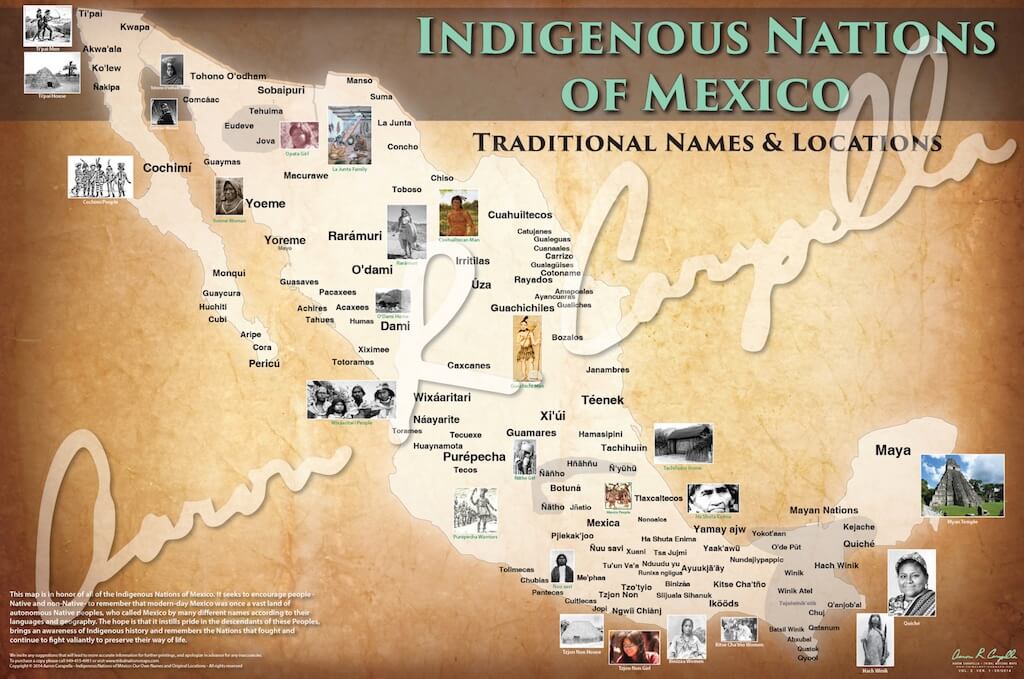
Three Mixtec languages associated with the Mixtec geographical space can be distinguished: Coastal Mixtec, Low Mixtec and High Mixtec.
Mixtec traditions and customs
The main occupation of the Mixtecs is agriculture, which they practice on small plots that are passed down from generation to generation.
The Mixtec spiritual tradition has an animistic component and posits that all humans, animals and inanimate things have a soul.
Their most important festivals are the patron saints, when they reaffirm their relationships with their families and members of their community.
The relative poverty of their country led to significant migration to other Mexican regions and to the United States.
5. Otomi
There are 668,000 Otomi in Mexico, which ranks fifth among the indigenous peoples with the largest population. They live in fragmented territory in the states of Mexico, Hidalgo, Querétaro, Michoacán, Guanajuato and Tlaxcala.
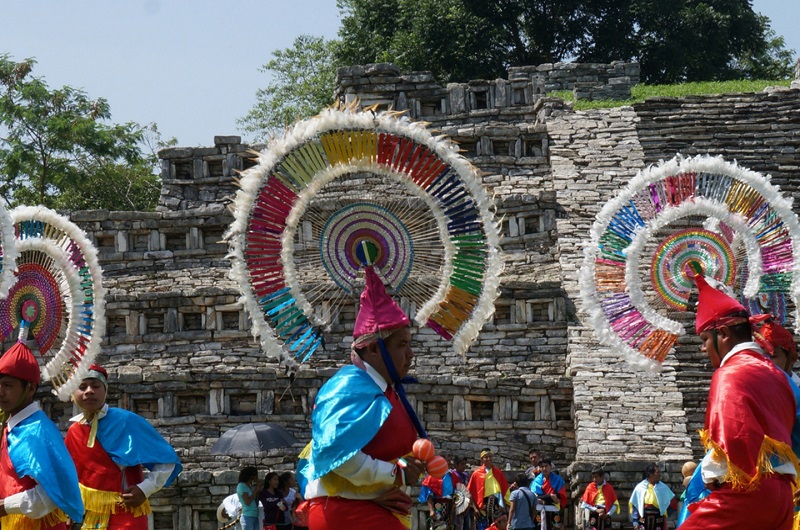
It is estimated that 50% speak Otomí, although linguistic diversity makes communication between speakers from different states difficult.
They made alliances with Hernán Cortés during the conquest, particularly to get rid of the dominance of other ethnic groups. They were evangelized by the Franciscans in colonial times.
They communicate with each other in Otomi, which is one of Mexico's 63 recognized indigenous languages along with Spanish.
In fact, Otomi is a family of languages whose number of variants varies according to the opinion of professionals. The common stem of all is Proto-Otomí, which is not a language with an original source but a hypothetical language reconstructed using historical linguistic techniques.
Otomi traditions and customs
The Otomi practice rites to improve the harvest and celebrate the Day of the Dead, the celebrations of Señor Santiago, and other dates of the Christian calendar.
Its choreographic tradition is spearheaded by the dances of Acatlaxquis, Santiagos, Moros, Matachines and Negritos.
The Acatlaxquis dance is one of the most popular. It is performed by men carrying long pipes and pipes as flutes. Its main stage is the patron saint festivals of the cities.
Among the Otomi, it is up to the groom's family to ask and negotiate for the bride's hand in front of their family group.
6. Totonakas
The Totonaca civilization arose in what is now the states of Veracruz and Puebla during the Late Classic Period, around AD 800. Their imperial capital and main urban center was El Tajín, whose archaeological ruins, classified as World Heritage Sites, pyramids, temples , buildings and more contain ballgame spaces that showcase the splendor of Totonac culture.
Other important Totonac centers were Papantla and Cempoala. In these two cities and in El Tajín, they left evidence of their monumental clay architecture, their varied ceramics and their stone carvings.
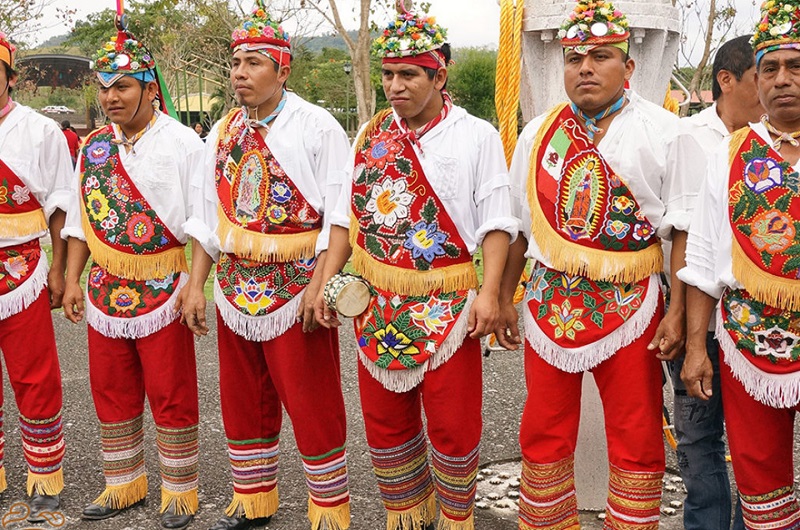
There are currently 412,000 Totonac indigenous people living in Mexico, based in Veracruz and Puebla.
The main deity of the people was the sun, to which they made human sacrifices. They also worshiped the corn goddess, whom they considered to be the woman of the sun, and offered her animal sacrifices, believing that she abhorred human suffering.
Traditions and customs of the Totonacas The rite of the voladores, one of the most famous in Mexico, was incorporated into the Totonac culture during the postclassic era and thanks to these people the ceremony survived in the Sierra Norte de Puebla.
The traditional women's costume is the Quechquémetl, a long, wide and embroidered dress.
Their typical houses have a single rectangular room with a palm or thatch roof, in which the whole family lives.
7. Tzotzil
The Tzotzils are an indigenous Chiapas people of the Mayan family. They are distributed in about 17 municipalities of Chiapas, with San Cristóbal de las Casas being their main center of life and activity.
Its region of influence can be divided between the highlands of Chiapas, with its mountainous topography and cold climate, and the lower zone, with less rugged and tropical climates.
They call themselves the "bats iviniketik" or "true men" and are part of one of 10 Indian groups in Chiapas.

There are currently 407,000 Tzotzile in Mexico, almost all of them in Chiapas, where they are the largest indigenous people.
Their language belongs to the Mayan language family and descends from Proto-Chol. Most indigenous peoples have Spanish as a second language.
The Tzotzil language is taught in some primary and secondary schools in Chiapas.
In 2013, Pope Francis approved the translation into Tzotzil of the prayers of the Catholic liturgy, including those used at Masses, Weddings, Baptisms, Confirmations, Confessions, Ordinations and Last Unctions.
Traditions and Customs of the Tzotzil
The Tzotzil believe that every person has two souls, one personal, residing in the heart and blood, and another associated with an animal spirit (coyote, jaguar, ocelot, and others). What happens to the animal affects the individual.
The Tzotzil do not eat sheep, which they consider sacred animals. The indigenous leaders are generally elders who must demonstrate supernatural powers.
The traditional female attire is a huipil, an indigo skirt, a cotton sash and a shawl. The men wear shorts, a shirt, a scarf, a wool poncho and a hat.
8. Tzeltal
The Tzeltals are another indigenous people of Mexico of Mayan origin. They live in the mountainous region of Chiapas and comprise 385,000 people distributed in communities governed by the political system of "customs and customs" that seeks to respect their organization and traditions. Their language is related to Tzotzil and both are very similar.
Many older people only speak Tzeltal, although the majority of children express themselves in Spanish and their mother tongue.

Tzeltal cosmology is based on the communion of body, mind, and spirit interacting with the world, community, and the supernatural. Illness and ill health are attributed to mismatches between these components.
The healing focuses on restoring balance between body, mind and spirit, hand in hand with shamans who use rituals to counteract imbalances and bad influences.
In their municipal organization they have mayors, mayordomos, lieutenants and rezadores who are assigned functions and rituals.
Traditions and customs of the Tzeltals
The Tzeltals have rites, offerings, and festivals, the most important of which are the patron saints.
Carnival also has special symbolism in some communities like Tenejapa and Oxchuc.
The main characters of the celebrations are the butlers and alfereces.
The typical costume of the Tzeltal women is a huipil and a black blouse, while men do not usually wear traditional clothing.
Tzeltal crafts consist primarily of pieces of textile woven and decorated with Mayan designs.
9. Mazahuas
The history of Mexican indigenous peoples shows that the Mazahuas arose from the Nahua migrations towards the end of the Postclassic period and from the cultural and racial fusion of the Toltec and Chichimek communities.
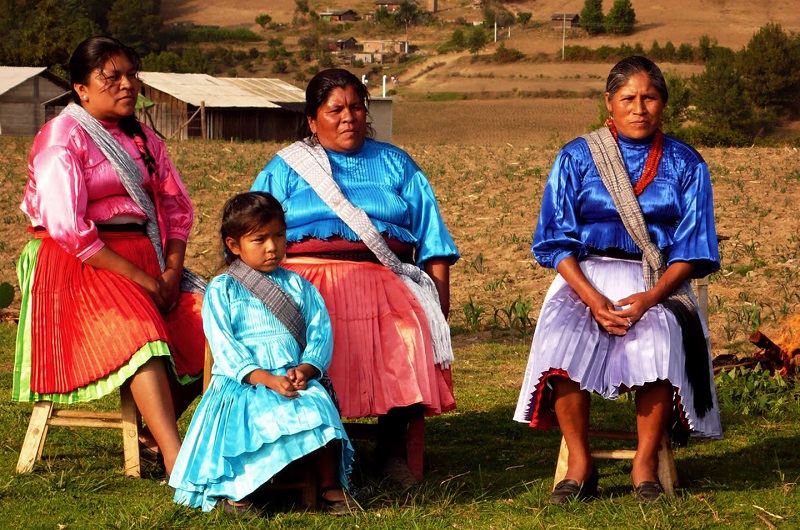
The Mazahua people of Mexico are approximately 327,000 indigenous people living in the states of Mexico and Michoacán, where they are the most numerous Amerindians.
The most important historical settlement was the Mexican community of San Felipe del Progreso.
Although the exact meaning of the term "Mazahua" is not known, some specialists claim that it comes from Nahuatl and means: "where there are deer".
The Mazahua language belongs to the Otomanguer family and has 2 variants, western or jnatjo and eastern or jnatrjo.
There is also a Mazahua minority in Coahuila. The city of Torreón is home to a community of about 900 indigenous people made up of Mazahuas who migrated north in the 20th century.
Mexico, Michoacán and Coahuila are the states that recognize this people as a separate ethnic group.
Traditions and customs of the Mazahuas
The Mazahua have preserved their cultural manifestations such as beliefs, ritual practices, language, oral tradition, dance, music, dress and handicrafts.
Traditionally, the mother tongue has been the main means of communication, although fewer and fewer children speak it.
The rites and festivities have an organization in which the main characters are the prosecutors, butlers and butlers. They usually build houses and do larger works on days called "faenas" in which the whole community participates.
10. Mazateken
The Mazatec are a Mexican ethnic group living north of Oaxaca and south of Puebla and Veracruz and consist of approximately 306,000 indigenous people.
They became known worldwide through María Sabina (1894-1985), a Mazatec Indian woman who achieved international fame through her open, ceremonial and healing use of hallucinogenic mushrooms.
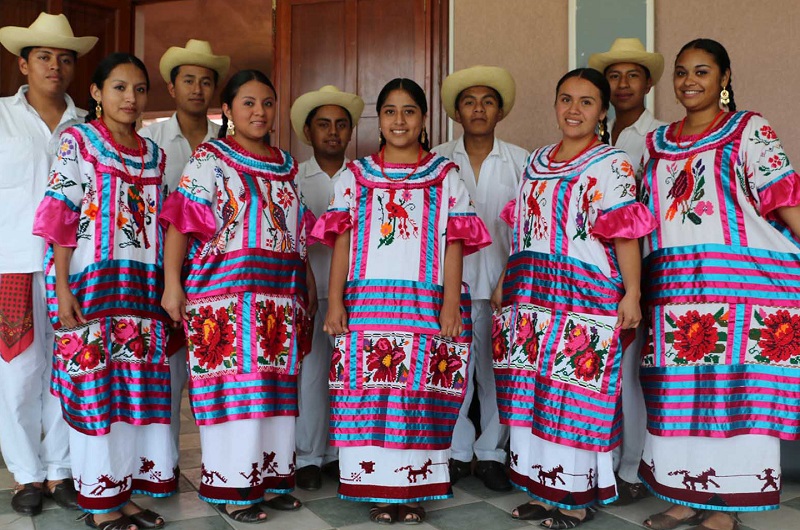
Their traditional terroir was the Sierra Mazateca in Oaxaca, divided into Mazateca Alta and Mazateca Baja, the former cold and temperate and the latter warmer.
Between 1953 and 1957, the construction of the Miguel Alemán Dam drastically changed the habitat of the Mazatec, causing the migration of tens of thousands of indigenous people.
The Mazatec languages, although closely related, do not form a linguistic unit. The most widespread variant is the Mazatec from Huautla de Jiménez, a magical town in Oaxaca and the birthplace of María Sabina.
This city is one of the main Mexican destinations for psychedelic tourism, made up of travelers interested in discovering new hallucinogenic experiences.
Traditions and Customs of the Mazatec
The main cultural traits of the Mazatec are their traditional medicine and ceremonial practices associated with the consumption of psychoactive mushrooms.
The main economic activities are fishing and agriculture, especially sugar cane and coffee.
Their rites and celebrations relate to the Christian and agricultural calendars, in which planting and harvest dates and requests for rain are prominent.
A therapeutic ritual is the consumption of hallucinogenic mushrooms to induce trance, thereby resolving personal and group conflicts.
11. Huasteken
Descended from the Mayas, the Huastecos inhabit La Huasteca, a vast region that includes northern Veracruz, southern Tamaulipas, and the territories of San Luis Potosí and Hidalgo, and to a lesser extent Puebla, Guanajuato, and Querétaro.
The Huasteca is usually identified with the state, speaking of Huasteca Veracruzana, Huasteca Potosina, and so on.
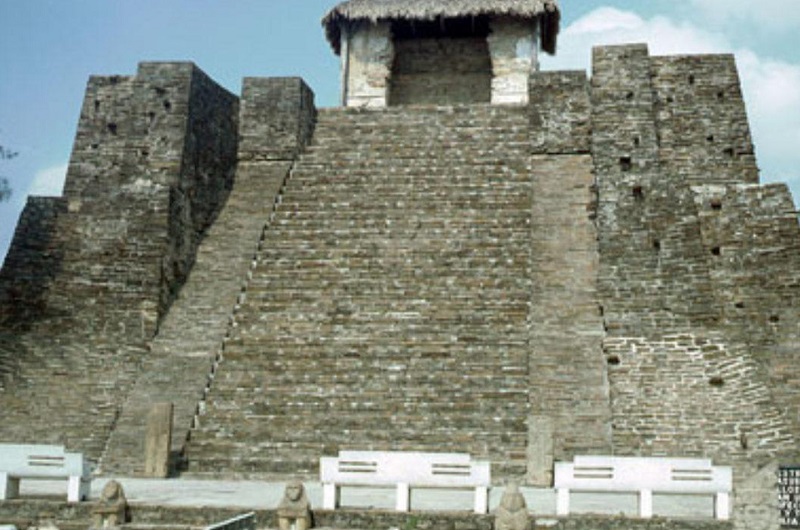
Huastec or Tenex is a Maya language and the only non-extinct language of the Huasteca branch, after the confirmed disappearance of the Chicomuselteco language in Chiapas in the 1980s.
It is also the only Mayan language spoken outside of the traditional Mayan historical space formed by the Yucatan Peninsula, Guatemala, Belize and El Salvador.
The huge territory of La Huasteca shows a great ecological diversity with coasts, rivers, mountains and plains. However, the Huasteca have always preferred a warm climate, as they typically live below 1000 meters above sea level. The basis of their economy and diet is corn.
There are currently 227,000 indigenous Huastecs in Mexico.
Traditions and customs of the Huasteken
This city is known for the Huapango or Son Huasteco, a music genre that is among the most popular in Mexico. Includes singing and knocking.
Among the Huasteca choreographies, the dance of the disguised, danced during the Candelaria festivities, and the dance of the Mecos, typical of the carnival, stand out.
The typical costume of the Huastecas is a panuco over a simple blouse and a wide and long skirt, predominating in all parts white, a characteristic of the dress of the Gulf of Mexico region.
12. Choles
The Choles are an indigenous people of Mayan origin living in the Mexican states of Chiapas, Tabasco and Campeche and in Guatemala. They call the stranger or foreigner, whether encomendero, landowner, rancher, evangelizer, scoundrel, or member of the government, "kaxlan," a word meaning "not of the community."
Their worldview revolves around corn, a sacred food granted by the gods. They consider themselves "corn people".
They speak the Chol language, a Mayan language with two dialects, Tila Chol and Tumbalá Chol, both associated with communities in Chiapas. It is a language very similar to classical Maya.
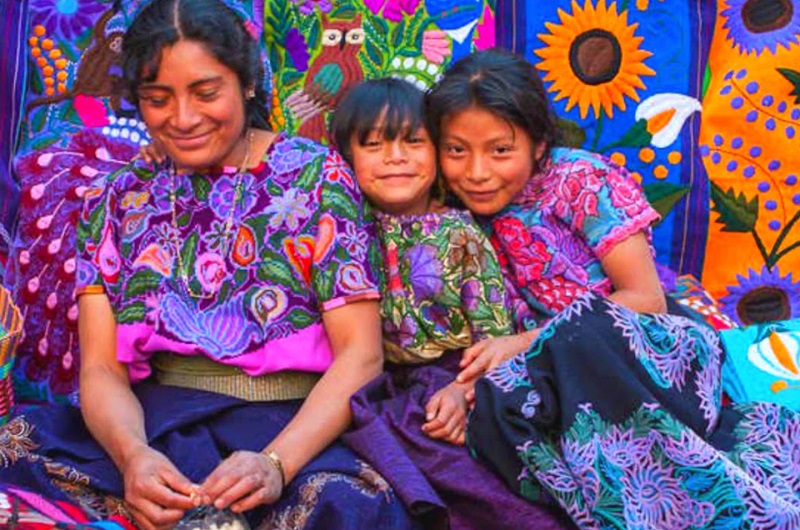
Its number system is vigesimal, as was common among the Mesoamerican Native Americans, whose numbering reference was the 20 fingers of the human body.
They live from cattle, pigs and agriculture, grow corn, beans, sugar cane, coffee and sesame.
Its natural environment is full of powerful rivers that create beautiful waterfalls like Agua Azul and Misol-Ha. There are 221,000 choles in Mexico.
Traditions and Customs of the Choles
The Chol value marriage and tend to marry between relatives, making them a highly inbred people.
The men are involved in agriculture and animal husbandry, while the women help harvest fruit, vegetables and herbs in small family gardens.
Its main festivals relate to the agricultural calendar in a mixture with Christian beliefs. Corn has a dominant position.
The preparation of the land celebrates the death of the corn god, while the harvest is the resurrection of the food deity.
13. Purepechas
This Mexican Native American people consists of 203,000 indigenous people living on the Tarasca or Purépecha Plateau in the state of Michoacán. In Nahuatl they were known as Michoacanos or Michoacas and their range extended as far as Guanajuato and Guerrero.
Their current communities include 22 parishes of Michoacán, and migratory flows have created branches in Guerrero, Guanajuato, Jalisco, the State of Mexico, Colima, Mexico City and even the United States.

They practiced in pre-Hispanic times a polytheistic religion in which a male creative principle, a female and a messenger or "divine breath" coexisted, a trilogy associated with the father, mother and son.
The symbol of the male creative principle was the sun, the moon represented the female creative principle and Venus the messenger.
Traditions and customs of the Purépechas
The Purépechas have a flag consisting of 4 quadrants of purple, sky blue, yellow and green with an obsidian figure in the center representing the sun god.
Purple symbolizes the Ciénaga de Zacapu region, blue the lake region, yellow the Cañada region and green the mountain forests.
One of their most important festivals is the Night of the Dead, when they celebrate the lives of their ancestors and remember the good times lived alongside them.
One of its musical manifestations is the Pirekua, a rafted song with a sentimental and nostalgic tone.
14. Chinantecas
The Chinantecas, or Chinantecos, live in an area of Chiapas known as the Chinantla, a socio-cultural and geographic region in the north of the state that includes 14 parishes. The population is 201,000 indigenous Mexicans.
The language is of Ottomanguic origin and consists of 14 variants, a number that is not exact as it depends on the linguistic criteria used.

The Chinantec language has a VOS structure (Verb - Object - Subject) and the number of tones varies from one dialect to another.
The origin of the Chinantecas is unknown, it is believed that they migrated to their current location from the Tehuacán Valley.
80% of the population was wiped out by diseases transmitted by the Spaniards and the conquest forced the rest to migrate to the highlands. During the colony, the Chinantla region had some economic importance through cochineal and cotton.
Traditions and Customs of the Chinantecas Stone soup or broth, an exotic Mexican preparation in which food is cooked by contact with red-hot stones, is of Sino-Chinese origin.
According to the tradition of this indigenous people, the soup is prepared by men and only with stones chosen by the elders. It is made in jícaras and not in metal or ceramic pots.
Chinantec women wear colorfully embroidered dresses with rounded and embellished necklines. The most important festivals are the Patronal Feast, the Carnival and the New Year.
15. Mixes
The mixes make up another Mexican indigenous people who settled in Oaxaca. There are approximately 169,000 indigenous people living in the Sierra Mixe, the Oaxaca mountain range of the Sierra Madre del Sur.
They speak Mixe, a language belonging to the Mixe-Zoquean family. There are 5 variants or dialects associated with the geography: High Mixe from the North, High Mixe from the South, Mixe from the Middle East, Mixe from the Midwest and Mixe Low. Some linguists add another mix spoken in communities in Totontepec Municipality.

Most Mixe communities are agrarian organized and operate independently in communally owned areas.
In the municipality of San Juan Guichicovi, the lands are exceptionally ejidos, and in the municipalities of San Juan Cotzocón and San Juan Mazatlán, the two forms of ownership coexist (communal property and ejidos).
Traditions and customs of the mixtures
The Mixes still use the door-to-door marketing system, selling or bartering food or clothing for other goods such as coffee, an exchange system that works in conjunction with the village markets.
Men carry the heaviest burdens in herding, hunting, fishing, and farming, while women help with weeding, harvesting, and storage. They also take care of the upbringing of the children and the food.
The Mixes believe that the spirits of the dead continue to live in the same neighborhood, performing rites at funerals so that they do not harm the living.
16. Tlapanecos
With 141,000 individuals, the Tlapanecos rank 16th among the indigenous peoples of Mexico in population.
The term "Tlapaneco" is Nahua native and means "he who has a dirty face," a derogatory meaning that these natives attempted to change to the word Me'phaa, meaning "he who is a resident of Tlapa." They live in south-central Guerrero State.
The Tlapanec language has Ottomanguic roots and was unclassified for a long time. It was later assimilated into the now-extinct Subtiaba language and later assimilated into the Oto-Manguean family.
Heu 8 variant idioms, which are tonal, meaning the word changes meaning depending on the tone with which it is pronounced. The numbering is vigesimal.
Their diet is based on corn, beans, squash, bananas and chili peppers, with Jamaican water as their main drink. In the coffee zones, the infusion is a traditional drink.
Traditions and Customs of the Tlapanecos Tlapaneco clothing is influenced by their Mixtec and Nahua neighbors. The typical female attire consists of a blue wool vest, a white blouse with colored threads around the neck, and a colorful skirt.
The main handicrafts vary from community to community and include lambswool textiles, woven palm hats and clay grills.
17. Tarahumaras
The Tarahumaras are a native Mexican ethnic group consisting of 122,000 indigenous people living in the Sierra Madre Occidental, Chihuahua, and parts of Sonora and Durango. They prefer to call themselves Rarámuris, meaning "the light-footed ones," a name that honors their tireless ability to run long distances.
Its high altitude habitat in the Sierra Tarahumara includes some of Mexico's most impressive chasms, such as the Copper, Batopilas and Urique Gorges. It is believed that they came through the Bering Strait and the oldest human presence in the mountains has been dated to 15,000 years.

Their language belongs to the Yuto-Nahua family, with 5 dialects according to geographical location: central Tarahumara, lowland, north, south-east and south-west. They live in log cabins and burrows and sleep on platforms or on animal skins lying on the ground.
Traditions and customs of the Tarahumara Rarajipari is a game in which the Tarahumara kick and chase a wooden ball over distances of more than 60 km. The female equivalent of therarajipari is the rowena, where females play with interlocking hoops.
The Tutugúri is a Rarámuri dance of thanksgiving to ward off curses and avoid illness and setbacks.
The ceremonial and social drink of the Tarahumara is tesguino, a type of corn beer.
18. Mayos
Mexico's Mayo City is located in the Mayo Valley (Sonora) and the Fuerte Valley (Sinaloa), in a coastal area between the Mayo and Fuerte rivers.
The name "Mayo" means "the people of the riverbank" and the population consists of 93,000 natives.
As with other ethnic groups, the name imposed on the city is not the one favored by the native people. The Mayos call themselves "Yoremes" which means "the people who respect traditions".
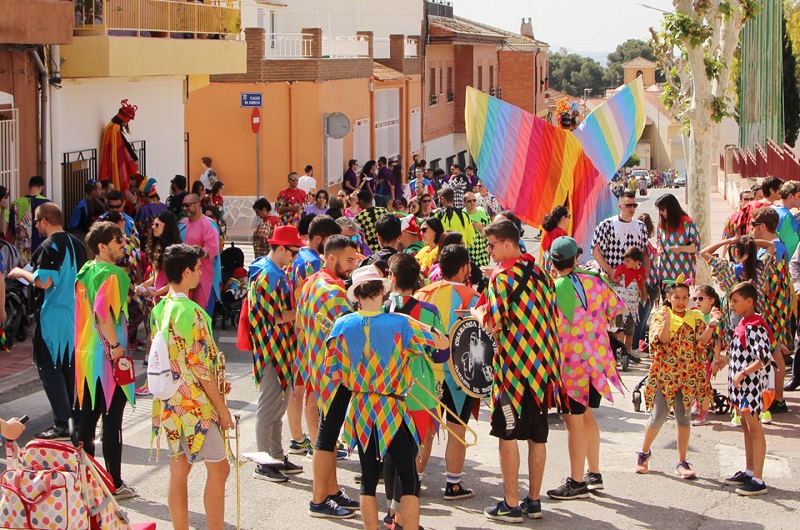
Their language is Yorem Nokki, of Uto-Aztec origin, very similar to Yaqui, which is nationally recognized as an indigenous language.
Their most important festivals are Lent and Holy Week, which they stage with all the events related to the Passion of Christ.
The Yoreme have a flag designed by a young aborigine whose name is unknown which consists of a black stag in a leaping position surrounded by stars on an orange background.
Mayan traditions and customs One of the Mayan myths tells that God created gold for the Yoris and labor for the Yoremes.
Mayo dances represent animals and their sacrifices to give life to man. They form allegories about free people in nature.
Its traditional medicine is based on the prescription of natural remedies by healers and the use of amulets, in a mixture of magic and Christian belief.
19. Zoques
The Zoque people live in 3 zones of the state of Chiapas (Sierra, Central Depression and Vertiente del Golfo) as well as parts of Oaxaca and Tabasco. Its population totals 87,000 aboriginal people believed to be descended from Olmec who migrated to Chiapas and Oaxaca. The Spanish conquerors subdued them in their encomiendas and decimated them with their diseases.
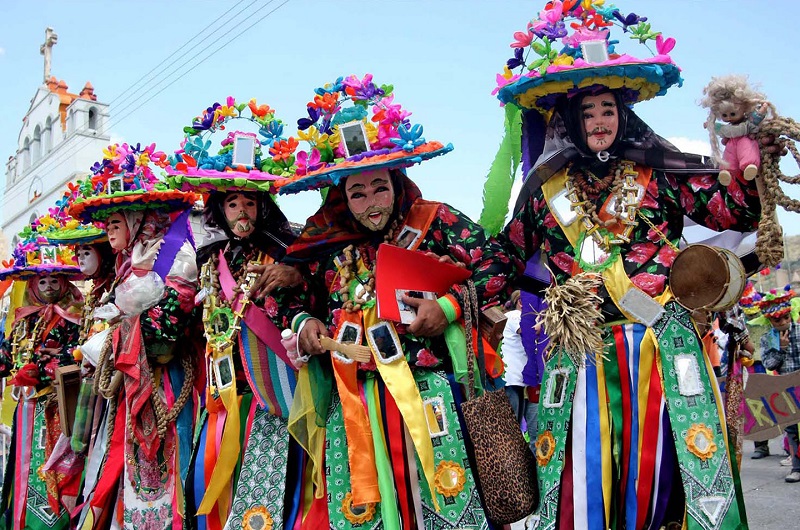
The Zoques language belongs to the Mixe-Zoquean language family. Vocabulary and intonation vary slightly by area and community. Their livelihood is farming and raising pigs and poultry. The main crops are corn, beans, chili peppers, squash, cocoa, coffee, bananas, pepper, mamey and guava.
The zoques associate the sun with Jesus Christ. They are very superstitious and if they fall to the ground, they assume that the "owner of the earth" wants to take over their soul.
The Christian idea of the devil is assimilated by the zoques to various animals that embody the spirit of evil.
Traditions and customs of the Zoques
They have a varied and colorful range of handicrafts that includes pottery, basketry, marquetry, furniture and other wooden items.
One of his finest artistic expressions is the sardine fisherman's dance, originally from the town of Tapijulapa in Tabasco.
The Zoques' iconic dish is Putzatzé, a thick broth made of beef offal, corn and chili peppers, popular at the celebrations of Rosario, Candelaria and Santa Teresa.
20. Chontales de Tabasco
They are an indigenous Tabasco people made up of 80,000 indigenous people of Mayan origin living in the communities of Nacajuca, Centla, Jalpa de Méndez, Macuspana and Centro.
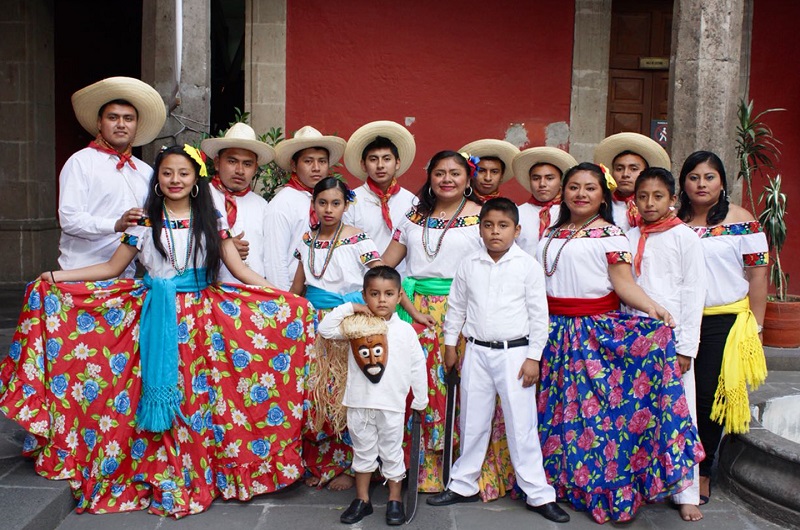
The Mexicans called all other peoples "chontal" ("foreigners"), which is why the name of the ethnic group comes from Nahuatl.
The Chontals of Tabasco call themselves "true men" ("yoko yinikob") and "true women" ("yoko ixikob"). Their language (yokot'an) translates to "the true language", one of the Mayan family belonging to the Cholan language subfamily, which also includes Chol and Chortí.
The Chontals of Tabasco have a strong belief in goblins, which they call "yumkap", meaning "owners of the land", "devils" who particularly fascinate children who lead them astray and get lost.
Traditions and customs of the Chontals of Tabasco
With Christian evangelization during the Conquest and Colonial era, many American pre-Hispanic peoples merged their deities with the main figures of Christianity.
For the Chontals, Ix Bolom is a pre-Hispanic goddess who lives in the center of the ocean and acts as the possessor of spirits and animals. With religious syncretism, Ix Bolom has been associated with the Virgin Mary.
The Chontals love pozol, an original and refreshing pre-Hispanic drink based on cocoa and corn.
The chontal drum and the hat are two of the most popular crafts made by these native Mexicans.
21. Popolucas
The 63,000 indigenous Mexican Popolucas live in the isthmus of Tehuantepec between the states of Veracruz and Oaxaca. The term "Popoluca" is confusing and even derogatory, since it was used by the Aztecs in Greek and Roman times in a similar way to the word "barbarian" in Europe.
The Popolucas speak a Mixe-Zoquean language and, like the Mixes, are descended from the Olmec. Although they share the language, these indigenous people do not manifest any particular ethnic identity.

Two dialects are distinguished, the Popoluca of Texistepec, also called Zoque of Texistepec, and the Popoluca of Sayula de Alemán and Oluta.
They subsist on domestic animals and farming by growing corn, squash, beans, tomatoes, pineapple, yams, chayote, coffee, and fruit.
Their religion is a blend of ancient beliefs. They believe in harmful spirits that live in certain places and can cause death. Magicians and healers are part of everyday life.
Traditions and customs of the Popolucas
The woman gives birth in a crouch with the help of her husband and the midwife. They are harsh on misbehaving children and punish them by making them inhale smoke from burning chili peppers.
Its main crafts are pottery, palm weaving, cotton skirts, baskets and hanging cradles.
Women typically wear a plaid blouse with a round or square neckline and a wrap skirt. The men wear muslin trousers and shirts. They wear huaraches or go barefoot.
22. Chatinos
Mexico's more than 60,000 indigenous chatinos live in southwest Oaxaca, near the coast. They are very close to the Zapotec in culture and language.
Chatino or Cha'cña is a Zapotec language of the Otomanguic family, from which several dialects are distinguished, including Chatino from Zenzontepec, Chatino from Tataltepec and Chatino from the East.

The Chatino people are autonomous in agriculture or as laborers on coffee plantations and other items.
Most Chatino communities have public services, including bilingual educational institutes.
Its political organization is based on civic and religious positions. The highest authority is a council of elders and they believe in the Holy Father God, Holy Mother Earth, Holy Grandmother, Holy Mother Moon and in the gods of the wind; also in the water, in the rain, in the fire and in the mountain.
Traditions and customs of Chatinos
One of their most important festivals is the Day of the Dead, on which they believe the souls of the deceased are brought back to life.
Candies, fruits, moles, tamales, candles, skulls and skeletons are part of the varied selection of festive items.
Colorfully embroidered blouses with crocheted ornaments and long skirts dominate women's clothing. The men's pieces are mainly white cotton.
Dance and music are important arts in the culture and part of its ceremonies. Traditional musical instruments are flutes, drums and rattles.
23. Amuzgos
The Amuzgos are an ethnic group of 58,000 indigenous people living in the mountainous regions of Guerrero and Oaxaca.
"Amuzgo" means "place where there are sweets" and the language of the same name is of Ottomanguic origin. A high percentage of the indigenous people only speak their mother tongue, with the rest being bilingual.
They live from fishing, subsistence farming and the production of handicrafts such as pottery, weaving and embroidery. They are known for their intricate handcrafted gnomes depicting geometric figures and small animals.

They practice pre-Columbian rites related to planting, the success of harvesting, and the protection of rivers, mountains, caves, and other natural formations.
The houses in the towns are usually rectangular with mud walls, while in the villages they are circular with mud walls and palm roofs.
Kitchen utensils and tools hang on the walls. Most rural communities lack electricity, potable water and sewerage.
Traditions and customs of the Amuzgos
The musical expressions move from one enclave to another, highlighting the sonecillo de tierra caliente, the fandango and the pan de syrup.
Among the dances, the tlacololeros, the old men, the tecuanes, the manueles and the twelve French couples stand out.
The women wear huipile and percale skirts decorated with frieze strips in bright contrasting colors such as turquoise on yellow and pink or green on blue.
The social base of the Amuzgos is the family (nuclear and extended). It is gratuitous that the bride's hand is solicited by a reputable middleman. The usual age for marriage is 17 and 15 for boys and girls, respectively.
24. Tojolabales
There are about 55,000 Tojolabal Indians in Mexico living in Chiapas near the Guatemalan border. Their main settlement is the town of Comitán de Domínguez, where they form the majority of the population.
Their language is Maya and "tojolabal" means "word heard without deception" or "open speech". Therefore, the Tojolabales call themselves "men of the straight word". They have different speech or communication styles, including everyday speech, hissing, grand speech, and sacred speech.

Its natural environment is the Lacandona jungle with private farms in the fertile valleys while most of the indigenous villages are in mountainous and rocky areas with lower agricultural productivity. The scarcity of farmland has fueled social conflicts in the region.
Traditions and customs of the Tojolabales
One of its fundamental rites is that of personal balance, in which individuals, with the help of a magician, perform a private ceremony to restore their inner harmony.
Both men and women wear brightly colored clothing, although women's clothing is more colorful and accessorized.
Western attire such as button-down shirts is already common in attire, although many Indians continue to dislike shoes, preferring to work and go barefoot.
Religion and belief are important parts of the daily life of the Tojolabals. Wizards specialize in two areas: healing and sorcery. The curanderos test the sick person's blood to determine whether the illness is a physical illness or a punishment from God.
25. Huicholes
The Huicholes or Wixárikas are a Mexican people living in the Sierra Madre Occidental in the state of Nayarit and in the mountainous areas of Jalisco, Zacatecas, San Luis Potosí and Durango.
The name "Huichol" is the Hispanization of a Nahuatl voice, while the term "wixárika" comes from the native language and means "the people".
The Huichole language, called "wixaritari", belongs to the group of Uto-Aztec languages and is related to the Nahua or Aztec group.
Traditional Huichole religiosity involves the use of peyote, a hallucinogenic cactus that grows in this part of the mountains.

Their religion is a mixture of animist and nativist beliefs, with strong pre-Columbian roots and relatively little influence from Catholicism.
They have 4 main deities: the corn, the deer, the eagle and the peyote, which they consider to be descendants of the sun.
Its main religious center is Mount Quemado (San Luis Potosí), which is divided into two sides, one for men and one for women.
Traditions and customs of the Huicholes
Huichol art is one of the most famous in Mexico, particularly for its beautiful yarn paintings. Huichol designs are world famous and have both cultural and religious meanings.
Huichol women wear a simple typical costume with a short poppy-colored blouse, petticoats (flowered coat that covers the head) and pearl necklaces. The men wear trousers and a white blanket shirt with cotton embroidery, a cape and a palm hat decorated with balls of yarn or beads.
26. Tepehuanes
The Tepehuanes or Tepehuanos are one of the many indigenous peoples of Mexico who blend Christianity with native pre-Hispanic elements in their religion.
There are 2 major branches of this ethnic group of 38,000 aborigines; the northern Tepehuanes living in Chihuahua and those from the south settled in Durango, Jalisco and Nayarit. Both groups speak a very similar language that belongs to the Uto-Aztec language family.
Those from the North tend to follow Christian traditions, while in all communities the Catholic figures (God, Jesus, the Virgin and the Saints) are associated with other divine entities such as the Spirit of the Mountain, the God of the Deer and the Morning Star.
In both cities, the shaman performs the function of a spiritual guide, directing the sacred rites and religious festivals.

The Tepehuanese diet is based on hunting, fishing and agriculture. They hunt deer, armadillos and rabbits; they fish for catfish, brown trout and shrimp; and harvest beans, corn, potatoes and tomatoes. They get milk, cheese and eggs from domestic animals.
Traditions and Customs of the Tepehuanese
The Northern Tepehuanese build their homes with the help of the entire community, receiving only food and drink. The tesguinadas are common in these group works.
The southern Tepehuanes celebrate the Tender Corn Festival in early October, a non-Christian ceremony to give thanks for the harvest's success.
They usually wear business attire and traditional costumes on special occasions. Traditional women's clothing consists of a skirt, blouse and satin apron in very colorful pieces decorated with lace and ribbons. They also sport a black rebozo and wear huaraches.
The men wear shorts and a long-sleeved shirt made of blanket fabric, a scarf tied around the neck, a wide-brimmed palm hat and huaraches.
27. Heikel
The Triqui people live in northwestern Oaxaca and form an atypical cultural enclave of 29,000 indigenous people in the midst of vast Mixtec territory. Their language belongs to the Mixtec family, which in turn is part of the large Otomanguer language family.
There are 4 known Triqui dialects spoken in the 4 main settlements (San Juan Copala, San Martín Itunyoso, San Andrés Chicahuaxtla and Santo Domingo del Estado). Evangelized by the Dominicans, they are essentially Catholic, although they retain non-Christian religious traditions such as the worship of nature, the stars, and astronomical phenomena.
They celebrate the Catholic patron saints who give names to cities in general, as well as Carnival when they perform their signature dances.
A pagan festival that is saved in Santo Domingo del Estado is that of the Divine Lightning celebrated on April 25 in the Cueva del Rayo where they believe the deity lives.
Traditions and Customs of the Triquis
One of the main symbols of the Triqui culture are the red huipiles, which are woven with great skill by the indigenous women, an activity girls are taught from a young age. Other crafts include pottery, hats, petate and tenate.
The essential garment for the Triqui woman is her red huipil, made on a backstrap loom. Triqui music is performed with guitar and violin, although in San Juan Copala they include a drum and a wind instrument similar to a panpipe.
28. Coras
The Coras are 25,000 indigenous Mexicans concentrated in the El Nayar community east of Nayarit, although there are also communities in Jalisco. They call themselves "nayeeri," a voice that gave the state its name. They speak the Nayeri language, related to Huichol and distantly to Nahuatl.
It is common for them to communicate with each other in their own language, although they also use a dialect composed of Nayeri, Modern Spanish, and Old Spanish. Their religion mixes Christianity with pre-Hispanic beliefs. Tayau represents the sun sitting on a golden chair at noon to smoke his pipe, the smoke of which is the clouds.
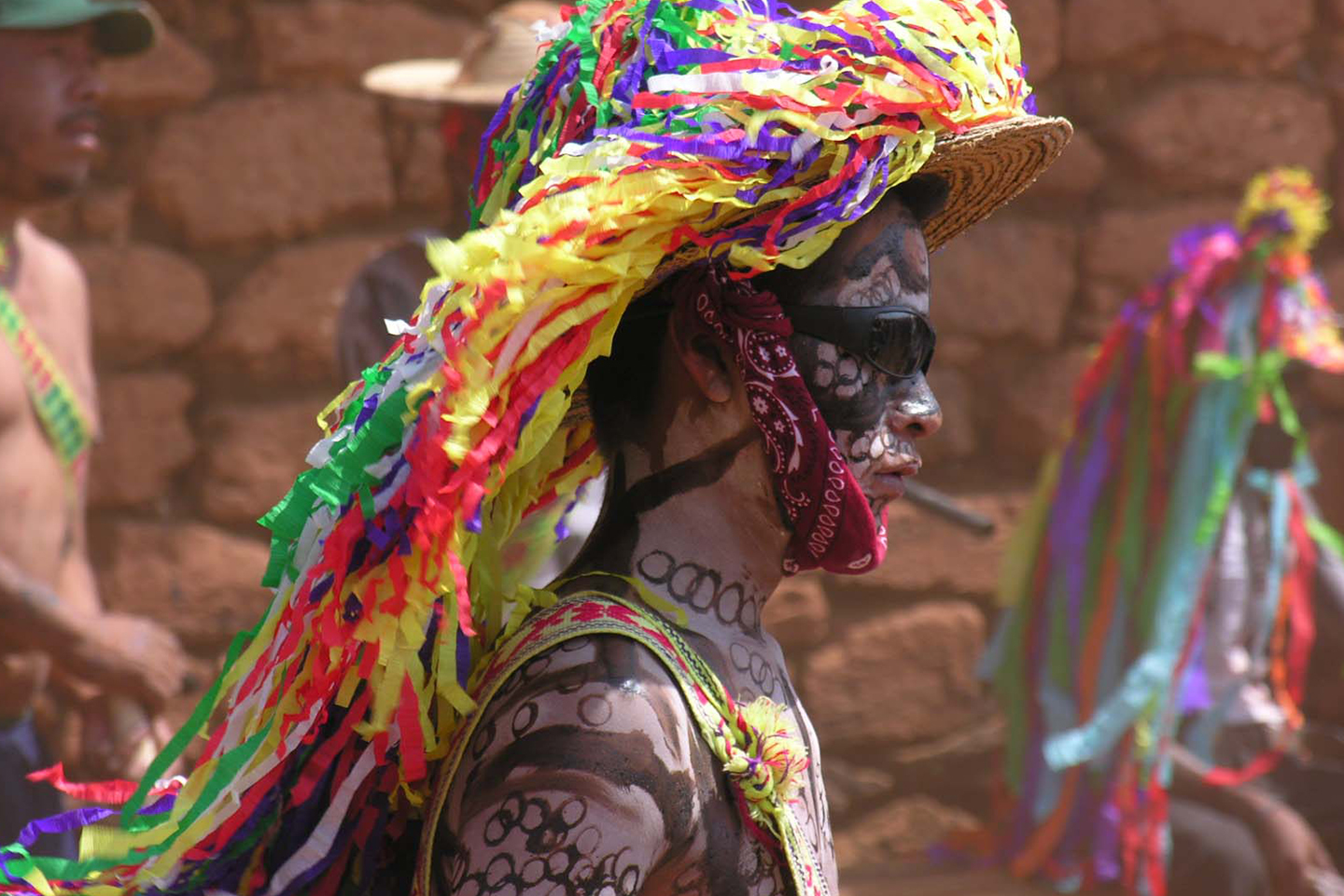
They live from agriculture and animal husbandry. The most commonly grown products are corn, beans, melons, squashes, watermelons, peanuts, sugarcane, cucumbers, tomatoes, peppers and Mexican turnips (jicama). They raise cattle, sheep, goats, pigs, horses, mules and poultry.
Traditions and customs of the Coras They maintain a close relationship with nature and consider their nearly 120,000 hectares of territory sacred. Several of its festivals aim for the gods, spirits, animals and plants to be reborn and renew the cycle of life.
They produce some handicrafts such as backpacks made of wool, synthetic fibers and cotton, jute hats and leather huaraches with tire soles.
The dress is very simple. The women wear skirts and blouses while the men wear cozy shorts, shirts, hats and huaraches.
29. Etnia Mam
The Mames are an indigenous people of Mayan origin living in Chiapas and Guatemala. In Mexico the population amounts to 24,000 aborigines who in pre-Hispanic times formed a lordship of frontiers and an unspecified organization whose capital was Zaculeu in the western highlands of Guatemala.
They put up great resistance to the Spanish conquerors, although they were eventually besieged and subdued by Gonzalo de Alvarado. They speak the Mam language with Mayan roots, the third most common among the languages of the Mayan family as it is spoken by 500,000 indigenous Guatemalans. Their religion includes Christian elements and ancient beliefs. They celebrate their Catholic saints and perform ceremonies such as the rain ceremony.
The main priestly figure is the chiman (grandfather), who acts as an intermediary between the secular populace and the supernatural world. They are priests and soothsayers, but not witches.
Traditions and customs of Mam Most of the working population works in raising domestic animals and in agriculture, planting and harvesting corn, beans, chilacayote and potatoes.
Other important professions are the marimba players, who promote the consumption of liquor in tobacconists, the muleteers (tooth pullers), the rezadores, and the animal castrators.
The women wear a blouse called a costurina or a short-sleeved shirt. Elegant dresses are usually yellow with red stripes. The typical male costume consists of short shorts, shirt, sash and red scarf, palm hat and huaraches.
30. Yaquis
They are from Sonora who have settled on the banks of the Yaqui River. About 23,000 currently reside in their ancestral territories, forming colonies in Sonoran cities.
La Matanza, Sarmiento and El Coloso are settlements in the city of Hermosillo known as the "Yaqui neighborhood".
They speak the Yaqui language or Yoem Noki from the Uto-Aztec family which is so similar to the Mayan language that they are 90% mutually intelligible.
The primary and secondary schools are bilingual (Yaqui/Spanish). They raise cattle, fish (especially in Puerto Lobos) and cultivate the land, mainly wheat, soybeans, alfalfa, safflower, vegetables and fodder.
Evangelized by the Jesuits, they are essentially Catholic and perform their rites in Latin. Its main religious festival is Lent, during which the Passion of Christ is performed, including performers impersonating Christ, Pontius Pilate, the Pharisees and the Romans, a performance to music by flutes and drums.
Yaqui traditions and customs
The dances are among the oldest traditions of the Yaqui. In the Pascola dance, three men dance bare-chested to the sound of dry caterpillar shells attached to their legs. The dance is accompanied by music from harp, violin and percussion instruments.
The stag dance is a representation of the animal's hunt, accompanied by harp and fiddle music. The Pajkolas dance usually precede.
